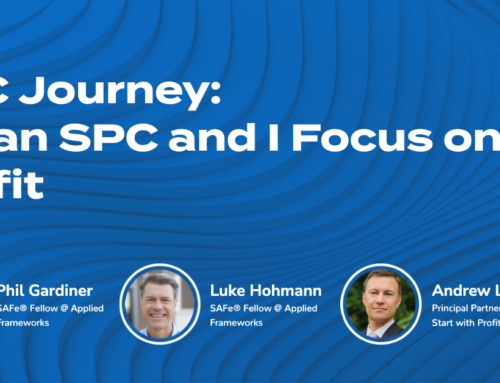As it turns out, there is a way to do Scrum at scale and it’s name is LeSS – referring to the idea that less is the key to accomplishing more with Scrum. LeSS, an acronym referring to Large–Scale Scrum, and its practices were created based on the field experience and collaboration between two of my fellow Certified Scrum Trainers, Craig Larman and Bas Vodde. Bas and Craig have serious credentials with large, multisite projects. Beginning in 2005, they have worked on large, multiyear projects with globally distributed teams building products that have successfully integrated hardware and software to deliver products using Scrum.
The details about the LeSS framework can be found in the books listed below and there is a GREAT summary of LeSS from the May\June 2013 issue of Crosstalk. Both books are featured in my reading lists for my Certified ScrumMaster course. Together these books are over a 1,000 pages of text and full of scaling goodness!!!
- Scaling Lean & Agile Development: Thinking and Organizational Tools for Large-Scale Scrum
- Practices for Scaling Lean & Agile Development: Large, Multisite and Offshore Product Development with Large-Scale Scrum
These are some serious, intimidating and dense books. They scare away people, but they shouldn’t. While I prefer the first book (Scaling Lean & Agile) because it explains clearly how Lean Thinking and Scrum are related, it is the only book that should be read cover-to-cover. Most of my clients, customers and former students like the second book (Practices for Scaling Lean & Agile) since you can just flip to the chapters that discuss the topic you need help on – anything from code practices, teams, estimating, planning to testing. The other benefit of this book is that it does not provide rules you must follow about scaling, but a series of ideas to try and things to avoid. It trusts that as a professional, you can apply your best judgement to your situation and find something that works.
Obviously, you should read the books. They have a great deal of useful details, ideas and things to try to help your organization succeed. However, I will summarize what I think are the two overriding concepts you need to be aware of before beginning with LeSS or considering to scale Scrum.
- The key to LeSS is creating empowered, mature, cross-functional feature Teams with dedicated ScrumMasters and Product Owners. Unresolved issues at the Team level propagate across the organization as Scrum scales. Unless you master Scrum at the Team level, it will flounder at the enterprise level.
- The patterns one uses to scale Scrum are different when you have two to three Teams, three to twelve Teams and more than twelve Teams. As one moves from level-to-level, great care and attention must be given to ensure the Spirit of Scrum remains intact and a vital consideration when making decisions. There is a tendency in large organizations to replace careful, considered thought with mindless adherence to policy and that, in my opinion, spells the end of Scrum.
IME, if you keep these two ideas in mind, then you will succeed with Scrum at scale. Ignore or diminish these two concepts and your LeSS will go badly eventually.






